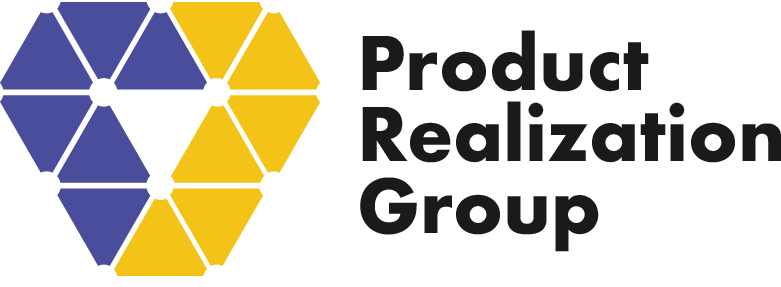
In an increasingly competitive market, the need to bring superior products to market swiftly, cost-effectively, and with minimal risk is paramount. This article presents a summary of the top ten best practices for managing risk in hardware development.
Read on to gain insights into navigating the maze of financial, operational, and market challenges that accompany hardware development. Based upon over 100 years of collective experience with hardware development, the Product Realization Group has distilled these insights from real-world experience. Learn how to reduce risk in your New Product Development and Introduction (NPDI) process and bring better products to market faster, at lower cost, and with less risk.
-
Employ Agile Hardware Development
Agile hardware development takes the best principles and practices from the Agile software development model and applies them to the creation of physical, hardware-based products. Depending on your existing development environment, you may need to adapt these Agile principles to work within your unique product and market constraints.
- Assign an experienced NPDI project manager who owns driving the project.
- Assemble a cross-functional NPDI team. All key functions should be involved early on in the product development process.
- Follow an agile hardware development process leveraging project management, and software and modified-for-hardware sprints to help keep the project on track.
-
Leverage Modeling, Simulation Tools, and Rapid Development
Modeling, simulation, and rapid prototyping tools enable agile methodologies to be applied more effectively early in the development process for hardware-based products and enable faster innovation cycles. The benefits of leveraging virtual and physical simulations and emulations of hardware designs include:
- Substantially reducing product development time and cost
- Improving end-user (and stakeholder) involvement
- Receiving early market validation and feedback
- Exploring a range of designs quickly
- Testing end-part materials early
-
Develop a Minimum Viable Product
An MVP process is one that you repeat over and over again: identify your riskiest assumption, find the smallest possible experiment to test that assumption, and use the results of the experiment to course correct. When thinking about an MVP, consider whether you are focused on the most basic requirements:
- Is a feature absolutely necessary for the first product to ship? After all, every additional feature adds complexity to the design.
- Do the product features address the market need without extra “bells and whistles”?
- What are the additional features that are important, but not urgent, that can be addressed after the initial market need has been validated using a strategic product roadmap?
-
Understand and Mitigate Risks Early
Ignore the risks of developing a new hardware product at your peril.
- Have you clearly defined and validated the business model?
- Do you have the right people for the product?
- Have you done the upfront market research and discovery to support creating a clear Marketing Requirements Document (MRD) and Product Requirements Document (PRD)?
- Have you verified that your technology is viable to support the market needs?
- Do you have an Agile and/or strong product development process?
- Do you have a clear understanding of the regulatory/safety requirements that the product must meet?
- Do you have a supply chain strategy in place prior to engineering development?
- Have you considered product materials, disposal, and reuse as part of your product lifecycle strategy?
-
Apply Design for Excellence (DfX)
Design for Excellence (DfX) is the umbrella term for designing high-quality products that can be cost-effectively built, tested, shipped, and supported.
Designs that are done “just” for the prototype may miss many real-world problems such as component obsolescence, technology that can’t scale, unrealistically high costs, features that aren’t wanted by customers, and designs that are difficult to manufacture or test.
DfX typically includes:
- Design for Reliability
- Design for Procurement
- Design for Manufacturing
- Design for Test
- Design for Logistics
- Design for Service
-
Incorporate Product Reliability, Validation, and Testing
There are numerous implications for the future quality perceptions of your product; product reliability, validation, and testing are ways to assure this quality is built-in.
- Product Reliability: products are expected to work while in use, but there is an inherent tradeoff among time, cost, and product reliability that you will need to balance to meet your launch goals as well as product cost targets. Typically, the more you invest in product reliability, the more the product costs and the longer time to market.
- For most hardware-based products, production tests are the largest investment and biggest bottleneck to scaling your business. Product validation is important because it gives you a measurable way to verify that your product meets the intended specifications in the development process.
-
Meet Agency and Environmental Compliance Requirements
You can’t get around standards and regulations. These requirements are critical for shipping products in volume but are often overlooked or minimized by entrepreneurs and folks new to product design. Define your strategy for compliance with directives based on your industry. Common agency and environmental compliance for high-tech hardware products include (there are many more):
- Food and Drug Administration (FDA)
- Underwriters Laboratory (UL)
- European Conformity (CE)
- Restriction of Hazardous Substances (RoHS)
- Waste Electrical and Electronic Equipment (WEEE)
-
Deploy Scalable Business Systems and Processes
Engineers who work in “silos” communicate poorly with other areas and miss critical information from other teams. This can increase development costs and the risk that designs are not manufacturable, have high product costs, or do not meet regulatory requirements.
Deploy systems early to support rapid development, from customer relationships to outside partners. Systems include (again, there are many more):
- Computer Aided Design (CAD) for Electrical, Mechanical
- Customer Relationship Management (CRM)
- Product Lifecycle Management (PLM)/Quality Management Systems (QMS)
- Enterprise Resource Planning (ERP)
-
Develop a Resilient Supply Chain
Companies that do not consider key materials and supply chain decisions it takes to get their product into volume manufacturing risk the trap of “designing for prototype.” This trap prevents companies from scaling into volume because parts are not available, materials costs are too high, quality is lowered, and customer shipments are missed.
Here are some examples of supply chain considerations:
- Understand end-user market location, capabilities, politics, and tariffs
- Utilize standard and short lead time parts in design
- Stabilize your product design prior to scaling into volume
- Carefully select your suppliers and manage them strategically
-
Verify Readiness for Volume Manufacturing
Some companies speed product development and fail to follow a solid industry-best-practice “phase-gate” process.
The risks of bringing products to market without a few iterations deprive your team of important lessons that can result in serious marketability, quality, functional, and scalability problems.
Costs for mistakes escalate rapidly from feasibility to prototype to pilot to full production. By implementing best practices, and actively reviewing and mitigating issues found as the result of feasibility, prototype, and pilot builds, design issues can be reduced or eliminated and manufacturing processes optimized for volume production.
Final Thoughts
While the best practices are shown in numerical order, and roughly follow the product development flow, they should be considered highly integrated and complementary activities that should be implemented holistically and in a parallel fashion to best support your business goals.
This is a high-level summary of the depth of knowledge PRG has on this subject. If you would like more information or a free chat about your NPDI process or your readiness for volume manufacturing, then contact us through our website. Or, if you’d like to test your product readiness for yourself, take one of our easy-to-use assessments which can also be found on our website.


